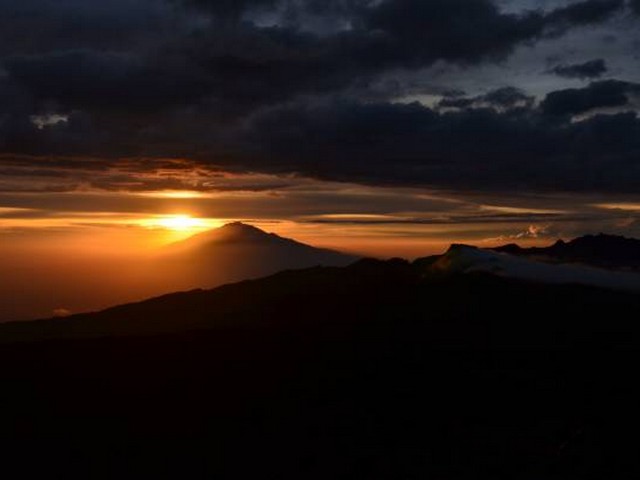How To Prepare Physically for Kilimanjaro Trekking
Standing as a beacon of resilience and majesty, Mount Kilimanjaro invites adventurers from across the globe to conquer its towering peak. As the highest mountain in Africa, Kilimanjaro offers not just a trek but an epic journey that tests the limits of human endurance and spirit. Whether you are a seasoned hiker or a novice excited by the allure of this majestic mountain, preparing physically for the climb is crucial. At Kilimanjaro Centre for Trekking and Ecotourism (KCTE), we understand the importance of readiness. This blog post serves as your comprehensive guide to physically preparing for the trek to ensure that you enjoy every step of this life-changing experience.
Embarking on the Journey: Physical Preparation Essentials
Why Physical Preparation Matters
Embarking on a climb to Kilimanjaro is no ordinary feat—it’s an adventure that demands strength, stamina, and determination. The mountain’s altitude, climate variations, and long trekking days call for a well-prepared body. Physical preparation not only enhances your chances of reaching the summit but also ensures a more enjoyable and safer trekking experience.
Starting Your Training Plan
Cardiovascular Fitness
Kilimanjaro’s trek involves long days of walking, often under challenging conditions. Building your cardiovascular endurance is essential. Engage in activities such as jogging, cycling, or swimming at least four times a week. Gradually increase the intensity and duration to simulate the daily exertion you’ll face on the mountain.
Strength Training
Your legs, core, and upper body will be significantly tested during the climb. Incorporate strength training into your routine focusing on these areas. Exercises like squats, lunges, planks, and push-ups can be very beneficial. Additionally, practicing with the backpack you’ll be carrying on Kilimanjaro can help accustom your body to the load.
Hiking Practice
There’s no better preparation than simulating the actual activity you’ll be doing. Spend time hiking, especially on varied terrains and inclines. Engage in multiple long-distance hikes to experience walking for hours, and if possible, include back-to-back hiking days to mimic consecutive trekking days on Kilimanjaro.
Altitude Acclimatization
One of the biggest challenges of Kilimanjaro is the altitude which can lead to acute mountain sickness (AMS). While complete pre-climb acclimatization isn’t possible unless living at elevation, you can visit high altitude areas or utilize altitude training masks to help your body start adapting.
Nutritional Strategies for Kilimanjaro Trekking
The Role of Nutrition
What you eat before and during the climb plays a pivotal role in your energy levels and overall health. Focus on a balanced diet rich in carbohydrates, proteins, and healthy fats to build up your body’s reserves.
Hydration is Key
Staying hydrated is critical, especially at altitude where dehydration occurs more rapidly. Aim to drink at least 3-4 liters of water daily before and during the trek.
Mental Preparation: The Unsung Hero
Building Mental Toughness
Physical preparation is critical, but mental resilience often makes the difference between success and failure. Engage in activities that challenge your mental stamina like meditation, yoga, or long-distance running.
Visualize Success
Regularly visualize yourself successfully reaching the summit. Positive visualization helps build mental and emotional resilience, bolstering your confidence as you face the physical demands of Kilimanjaro.
Gear and Equipment: Dress for Success
Selecting the Right Gear
Invest in high-quality trekking gear, including a reliable pair of hiking boots, moisture-wicking clothing, a warm sleeping bag, and a sturdy backpack. Don’t forget essential accessories like sunglasses, sunscreen, and a hat for protection against the sun.
Practice with Your Gear
Before heading to Kilimanjaro, use your trekking gear during training to ensure everything is comfortable and functional. This helps in avoiding surprises during the actual trek.
Why Choose Kilimanjaro Centre for Trekking and Ecotourism (KCTE)?
At KCTE, we are not just committed to providing you with an unforgettable Kilimanjaro adventure; we ensure you are fully prepared to embrace every moment of your journey. Our expert guides and comprehensive pre-trek support make KCTE your ideal partner as you prepare to conquer the roof of Africa.
FAQs: Preparing for Kilimanjaro
Q: How long should I train before attempting Kilimanjaro?
A: Ideally, start training at least 6 months before your trek. This gives your body ample time to adjust to the rigorous demands of the climb.
Q: Can I climb Kilimanjaro without prior trekking experience?
A: Yes, many first-time trekkers successfully summit Kilimanjaro. However, having some prior trekking experience can be incredibly beneficial.
Q: What is the best time of year to climb Kilimanjaro?
A: The best times to climb are during the dry seasons: January to mid-March and June to October.
Q: How do I deal with altitude sickness?
A: Acclimatization is key. Choose a longer route if possible to allow more time to adapt to the altitude. Staying hydrated and moving at a slow, steady pace also helps.
Ready to Conquer Kilimanjaro?
Preparing physically for Kilimanjaro is a journey that begins long before you set foot on the mountain. At Kilimanjaro Centre for Trekking and Ecotourism, we are dedicated to helping you make every step count. Whether you are seeking adventure, the thrill of the climb, or the beauty of nature, KCTE guarantees an experience tailored to meet your every need. Book your Kilimanjaro climb with us today and start your journey to the summit of one of the world’s most iconic mountains. Embrace the challenge, enjoy the preparation, and transform your dreams into reality with KCTE!




